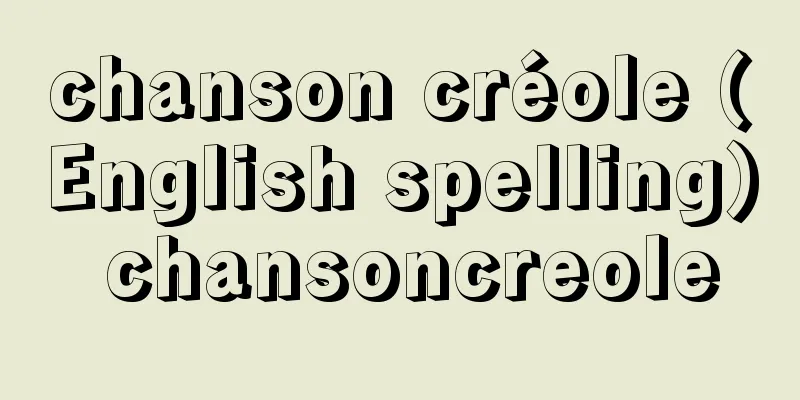Retrial - Saishin

|
It is an emergency relief procedure against a final judgment, established to balance the legal stability of a final judgment with justice. In the Code of Criminal Procedure, it refers to a relief trial against a final judgment due to an injustice in the findings of fact. A request for retrial may be made for the benefit of the person who received a final judgment of guilty in cases stipulated in Article 435 of the Code. In accordance with the spirit of Article 39 of the Constitution, which states that a person cannot be held criminally responsible for an act for which he or she has already been found not guilty, the current Code of Criminal Procedure does not recognize the system of prejudicial retrial that was recognized in the old law. A request for retrial may be made even when the execution of the sentence has been completed or it is no longer subject to execution. A request for retrial does not have the effect of suspending the execution of the sentence, but the public prosecutor of the public prosecutor's office corresponding to the competent court may suspend the execution of the sentence until the trial on the request for retrial is held. Those who have the right to request a retrial are the public prosecutor, the person who has been found guilty, the legal representative and guardian of the person who has been found guilty, and in the case of the person who has been found guilty being deceased or in a state of insanity, the spouse, lineal relatives and siblings (Criminal Procedure Code, Article 439, Paragraph 1). If there is a reason for a request for a retrial, a decision to open a retrial must be made (Criminal Procedure Code, Article 448, Paragraph 1). When a decision to open a retrial is made, the decision may suspend the execution of the sentence (Criminal Procedure Code, Article 448, Paragraph 2). In principle, the court must make a further trial according to the level of the trial in cases where a decision to open a retrial has been finalized. In a retrial, a sentence heavier than that of the original judgment cannot be handed down. When a not guilty verdict is handed down in a retrial, the verdict must be published in the Official Gazette and in newspapers (Criminal Procedure Code, Articles 451-453, Criminal Compensation Act, State Compensation Act). Among the provisions of Article 435 of the Code of Criminal Procedure that provide for grounds for retrial, the most important is when clear evidence is newly discovered that should lead to an acquittal or exemption of a person who has been convicted of a crime, a remission of a sentence, or a lesser crime than that of the original judgment (Article 435, item 6). Whether or not a retrial will be held depends on whether there is "clear evidence." Previously, grounds for retrial were only granted when there was a high probability of innocence, and it was considered that "in case of doubt, the benefit of the final judgment should prevail" rather than "in case of doubt, the benefit of the defendant should prevail." However, if this were to happen, grounds for retrial would not be granted unless the real culprit was discovered, and a retrial would become a "closed door." Therefore, precedent has stated that "clear evidence which should lead to a verdict of innocence" means evidence that creates reasonable doubt about the findings of fact in the final judgment and is likely to overturn that finding, and that when making this judgment, the ironclad rule in criminal trials that "in case of doubt, the benefit of the defendant should prevail" applies, in the sense that in order to open a retrial, it is sufficient to create reasonable doubt about the findings of fact in the final judgment (Decision of the First Petty Bench of the Supreme Court on May 20, 1975). This precedent (the Shiratori case) gave impetus to the so-called "era of retrials," and led to acquittals in retrials in serious cases. Famous examples of cases in which a not guilty verdict was given in a retrial after the Second World War include the so-called Yoshida Ishimatsu case, in which a defendant was sentenced to life imprisonment for robbery and murder and was later found not guilty in a retrial some 50 years later, the so-called Kanamori case for arson, the so-called Hirosaki University professor's wife murder case for murder, the so-called Kato case for robbery and murder, and the so-called Yoneya case for rape resulting in death and murder. After the Shiratori case, not guilty verdicts were given in retrials for cases in which the death penalty was finalized, sending shock waves through the legal world. These include the so-called Menda case, in which a man on death row for robbery-murder and attempted robbery was found not guilty on July 15, 1983, because his alibi was recognized; the so-called Saitagawa case, in which a man on death row for robbery-murder was found not guilty on March 12, 1984, because there were doubts about the veracity of his confession; and the so-called Matsuyama case, in which a man on death row for robbery-murder and arson of a non-residential building was found not guilty on July 11, 1984, because his confession lacked objective evidence and was not credible. Then, there was the Shimada case, in which a man on death row for rape resulting in injury and murder was found not guilty on January 31, 1989. In the so-called Tokushima radio dealer murder case, a not guilty verdict was handed down on July 9, 1985, in the first posthumous retrial. In addition, in cases of violation of the Peace Preservation Law, when the grounds for a retrial for acquittal and the grounds for a retrial for acquittal conflict with each other, a precedent of March 14, 2008 states that a verdict of acquittal should be handed down (Yokohama case). In addition, in the case of Ashikaga, where a life sentence was handed down for indecent kidnapping, murder and abandonment of a corpse based on DNA testing, a verdict of not guilty was handed down on retrial on March 26, 2010, because it was found that the DNA testing did not match the defendant. In addition, in the Civil Procedure Law, when a case that has been closed by the finality of a judgment has certain major defects listed in Article 338 of the same law, the court that made the judgment may further review the validity of the judgment upon an appeal by the party seeking a retrial (Articles 338 to 349, 403 of the same law).Retrials in other legal fields are also provided for in the Administrative Litigation Law (Article 34), the Companies Act (Article 853), the Patent Act (Article 171), and the International Court of Justice Regulations (Article 61). [Ichiro Uchida and Morikazu Taguchi] [References] | | accusation| |Source: Shogakukan Encyclopedia Nipponica About Encyclopedia Nipponica Information | Legend |
|
確定判決の法的安定性と正義との調和を図るために設けられた、確定判決に対してなす非常救済手続である。刑事訴訟法では、事実認定の不当を理由として確定判決に対して行われる救済裁判をいう。再審の請求は、同法第435条に法定されている場合に、有罪の言渡しをした確定判決に対して、その言渡しを受けた者の利益のために、これをすることができる。すでに無罪の裁判のあった行為についてはふたたび刑事上の責任を問われないとする憲法第39条の趣旨から、旧法が認めていた不利益再審の制度を現行刑事訴訟法は認めていない。再審の請求は、刑の執行が終わり、またはその執行を受けることがないようになったときでも、これをすることができる。再審の請求は、刑の執行を停止する効力をもたないが、管轄裁判所に対応する検察庁の検察官は、再審の請求についての裁判があるまで刑の執行を停止することができる。 再審の請求権者は、検察官、有罪の言渡しを受けた者、有罪の言渡しを受けた者の法定代理人および保佐人、有罪の言渡しを受けた者が死亡しまたは心神喪失の状態にある場合には、その配偶者、直系の親族および兄弟姉妹である(刑事訴訟法439条1項)。再審請求に理由のあるときは、再審開始の決定をしなければならない(同法448条1項)。再審の開始の決定をしたときは、決定で刑の執行を停止することができる(同法448条2項)。裁判所は、再審開始の決定が確定した事件については、原則として、その審級に従い、さらに審判をしなければならない。再審においては、原判決の刑より重い刑を言い渡すことはできない。再審において無罪の言渡しをしたときは、官報および新聞紙上に掲載して、その判決を公示しなければならない(同法451条~453条、刑事補償法、国家賠償法)。 再審理由を定めた刑事訴訟法第435条のうち、とくに重要なのは、有罪の言渡しを受けた者に無罪か免訴を言い渡すべき明らかな証拠や、刑の言渡しを受けた者に刑の免除を言い渡すべき明らかな証拠、または原判決の罪より軽い罪を認めるべき明らかな証拠を、それぞれ新たに発見したとき(435条6号)である。再審が開始されるかどうかは、「明らかな証拠」があるかどうかにかかっている。以前は、再審理由は無罪の高度の蓋然性(がいぜんせい)がある場合にのみ認められ、「疑わしきは被告人の利益に」ではなく「疑わしきは確定判決の利益に」と考えられてきたが、そうなると、たとえば真犯人でも発見しないかぎり再審理由は認められないことになり、再審は「開かずの門」となってしまう。そこで、判例は、「無罪を言い渡すべき明らかな証拠」とは、確定判決における事実認定につき合理的な疑いを抱かせ、その認定を覆すに足りる蓋然性のある証拠をいい、その判断に際しても、再審開始のためには確定判決における事実認定につき合理的な疑いを生じせしめれば足りるという意味において、「疑わしいときは被告人の利益に」という刑事裁判における鉄則が適用されるとした(昭和50年5月20日最高裁第一小法廷決定)。この判例(白鳥事件)により、いわゆる「再審の時代」にはずみがつき、重大事件の再審無罪判決が出されるに至った。 第二次世界大戦後、再審により無罪判決が下された著名な例としては、強盗殺人被告事件について無期懲役刑に処せられてのち約50年を経て再審判決により無罪が言い渡されたいわゆる吉田石松老事件、放火事件についてのいわゆる金森老事件、殺人罪についてのいわゆる弘前(ひろさき)大教授夫人殺し事件、強盗殺人事件についてのいわゆる加藤老事件、強姦(ごうかん)致死・殺人事件についてのいわゆる米谷(よねや)事件などがある。上記白鳥事件判例の後、死刑の確定判決に対し再審で無罪判決が下され、司法界に大きな衝撃を与えた。すなわち、強盗殺人・同未遂等再審被告事件の死刑確定者に対してアリバイの成立を認めて1983年(昭和58)7月15日に無罪を言い渡したいわゆる免田事件、強盗殺人被告再審事件の死刑確定者に対して自白の真実性に疑いがあるなどとして1984年3月12日に無罪を言い渡したいわゆる財田川(さいたがわ)事件、強盗殺人・非現住建造物放火再審被告事件の死刑確定者に対して自白には客観的裏づけが乏しく信用できないなどとして1984年7月11日に無罪を言い渡したいわゆる松山事件がこれである。さらに、その後、強姦致傷・殺人事件の死刑確定者に対して1989年(平成1)1月31日に再審無罪を言い渡した島田事件がある。また、いわゆる徳島ラジオ商殺し事件では、初の死後再審につき、1985年7月9日に無罪の判決が言い渡されている。なお、治安維持法違反事件につき、無罪の再審理由と免訴の再審理由とが競合している場合に、2008年3月14日の判例は免訴の判決を言い渡すべきであるとしている(横浜事件)。また、わいせつ誘拐・殺人および死体遺棄事件につきDNA型鑑定に基づき無期懲役とした事件につき、DNA型鑑定が被告人と一致しないことが判明したとして2010年3月26日に再審無罪の判決が言い渡された足利事件がある。 なお、民事訴訟法では、裁判の確定によって終了した事件について、同法第338条列挙の一定の重大な瑕疵(かし)がある場合に、当事者の再審の訴えをもってする不服申立てにより、その裁判をした裁判所に、さらにその裁判の当否を審判させる手続をいう(同法338条~349条、403条)。また、他の法分野での再審については、行政事件訴訟法(34条)、会社法(853条)、特許法(171条)、国際司法裁判所規定(61条)に定められている。 [内田一郎・田口守一] [参照項目] | | | |出典 小学館 日本大百科全書(ニッポニカ)日本大百科全書(ニッポニカ)について 情報 | 凡例 |
Recommend
Grants-in-Aid for Scientific Research
"Grant-in-Aid for Scientific Research" i...
Kariganeya
…In addition to Korin, which he began using at th...
Fresh cultivation - pond making
Also called "ikidukuri." Also written as...
German East Africa Company (English: Deutsch‐Ostafrikanische Gesellschaft)
A chartered company that received a royal charter ...
El Teniente Copper Mine
A copper mine located 100 km south-southeast of S...
Finck, FN (English spelling) FinckFN
...As can be seen from this, it is impossible to ...
Arrab - Arrab
… [Islam and Arab] The word "Arab" itse...
Mansaku Otani - Mansaku Otani
...He became a disciple of the second Tomoemon an...
Station - Umaya
Under the Ritsuryo system, these facilities came u...
Oigawa River
A river that originates on the eastern edge of the...
Treaty of Küçük Kaynarca
A peace treaty between the Ottoman Empire and Russ...
Contemporary Chronicles - Toudaiki
A diary-style chronicle from the early modern per...
Layer-built cell
A battery that can obtain a nominal voltage of 4....
Coat of arms - Monsho
A seal that depicts a design of an animal, plant,...
Custom and Conflict in Africa
For example, Elman R. Service, in his book Primit...









